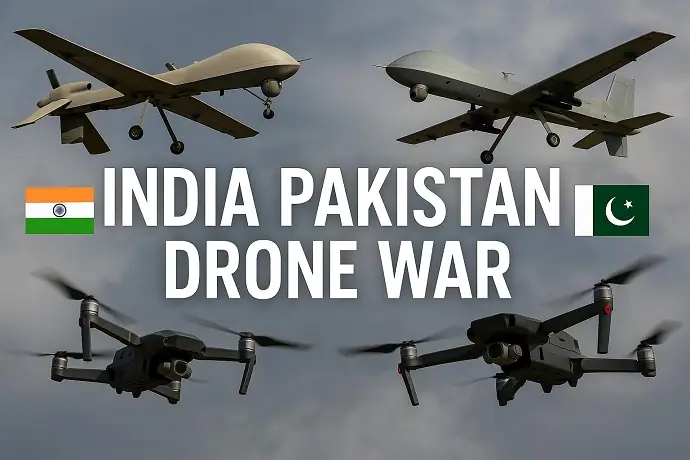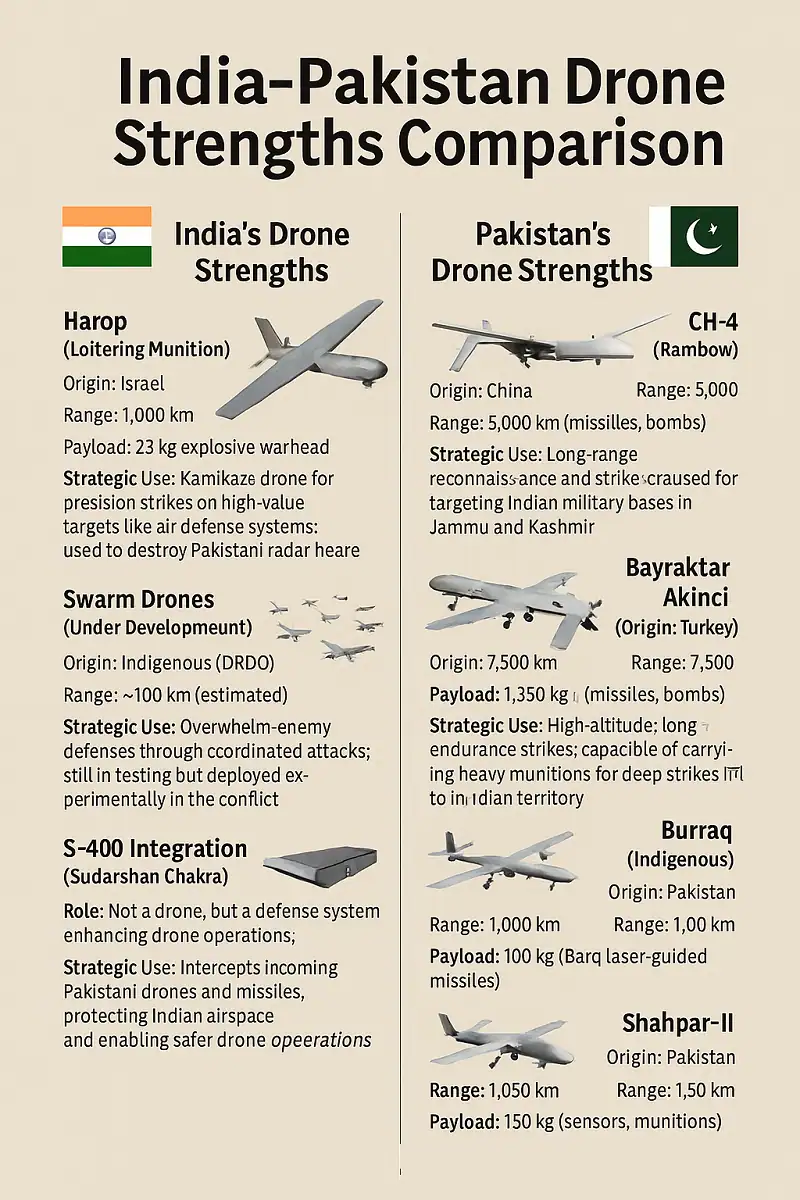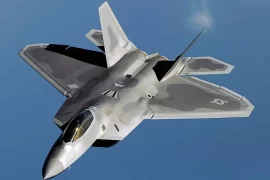In May 2025, the volatile India-Pakistan rivalry escalated into a groundbreaking and perilous conflict: the world’s first drone war between nuclear-armed neighbors. Centered on the long-disputed Kashmir region, this clash has introduced a new dimension to modern warfare, with both nations deploying advanced unmanned aerial vehicles (UAVs) in a series of aggressive exchanges. The conflict, triggered by a deadly militant attack in April 2025, has raised global alarms due to its potential for nuclear escalation. This article delves into the origins, key developments, technological advancements, and broader implications of the India-Pakistan drone war, offering a comprehensive look at its impact on regional stability and global security.
Background of the India-Pakistan Drone War
The India-Pakistan rivalry began with the 1947 partition, when British colonial rule ended, creating two independent nations. The disputed territory of Jammu and Kashmir has been a persistent flashpoint, fueling three full-scale wars (1947, 1965, 1971) and countless skirmishes. Both countries, nuclear powers since 1998, have maintained an uneasy peace, marked by periodic escalations. The latest chapter in this saga began on April 22, 2025, when a militant attack in Pahalgam, Indian-administered Kashmir, killed 25 tourists and a local guide. India swiftly blamed Pakistan for supporting the attackers, citing links to groups like Jaish-e-Mohammed and Lashkar-e-Taiba. Pakistan denied the allegations, accusing India of fabricating claims to justify aggression.

On May 7, 2025, India launched Operation Sindoor, a series of missile strikes targeting alleged terrorist infrastructure in Pakistan and Pakistan-administered Kashmir. India claimed the strikes avoided military targets, focusing solely on militant hideouts. Pakistan, however, reported 31 civilian deaths, including women and children, and condemned the operation as an “act of war.” This set the stage for a rapid escalation, with drones becoming the weapon of choice.
Key Developments in the India-Pakistan Drone War
Drone Attacks and Counterattacks
The drone war erupted in earnest on May 8, 2025, when Pakistan’s military reported shooting down 25 Indian drones, including Israeli-made Harop loitering munitions, over cities like Karachi, Lahore, and Rawalpindi. One drone struck a military site near Lahore, killing one civilian and wounding four soldiers. Pakistan’s Inter-Services Public Relations (ISPR) claimed the drones were launched from Indian air bases, a charge India denied. Instead, India asserted that its drones had neutralized a Pakistani air defense system in Lahore, showcasing its precision strike capabilities.
Pakistan retaliated with Operation Bunyan al-Marsus on May 10, 2025, deploying a fleet of drones to target Indian military bases in Jammu and Kashmir. India reported intercepting over 500 Pakistani drones across 24 cities, including Amritsar and Srinagar, though Pakistan dismissed these numbers as exaggerated. The conflict has caused significant casualties: Pakistan reported 36 deaths, while India cited 16 civilian deaths from cross-border shelling. Civilian infrastructure, including schools, mosques, and hospitals, has also been damaged, intensifying humanitarian concerns.
Technological Advancements
The 2025 drone war has highlighted the sophisticated arsenals of both nations. India deployed its S-400 missile system, dubbed Sudarshan Chakra, for the first time in combat, successfully intercepting Pakistani drones and missiles. India is also developing swarm drone tactics, where multiple UAVs coordinate to overwhelm enemy defenses. These systems, inspired by U.S. and Israeli models, represent a leap in India’s military capabilities.
Meanwhile, Pakistan’s drone strength has been showcased by a diverse drone fleet, including Chinese CH-4, Turkish Bayraktar Akinci, and indigenous Burraq and Shahpar drones. Its “loyal wingman” drones, which operate alongside crewed aircraft, have enhanced strike precision and situational awareness. Both nations are using kamikaze drones—low-cost, one-way UAVs similar to those seen in the Ukraine conflict. These drones, carrying explosive payloads, have proven highly destructive, targeting military installations and infrastructure with minimal risk to operators.

International Reactions
The international community has responded with urgency to the drone war. The United States, China, and Russia have called for de-escalation, emphasizing the nuclear risks. U.S. Secretary of State Marco Rubio held talks with Indian and Pakistani leaders, while Iran and Saudi Arabia offered to mediate. The U.S. issued a travel warning for Pakistan and directed its Lahore consulate staff to shelter in place due to drone-related threats. The United Nations Security Council convened an emergency session but failed to pass a resolution due to disagreements among permanent members.
Information Warfare
Both nations have engaged in a fierce disinformation campaign, amplifying the conflict’s complexity. Pakistan falsely claimed India attacked a Sikh holy site in Amritsar, a charge India refuted with satellite imagery. India, in turn, accused Pakistan of staging civilian casualties to garner sympathy. Social media platforms, particularly X, have been flooded with unverified reports, making it difficult to discern fact from fiction. This information warfare has further eroded trust, complicating diplomatic efforts.
Implications of the Drone War
Regional Instability
The drone war has destabilized the South Asian region, displacing thousands in Kashmir as border communities flee shelling and drone strikes. Economic impacts are significant: India’s stock market has declined, and major events like the Indian Premier League (IPL) have been suspended. Pakistan’s economy, already strained, faces further pressure from infrastructure damage and disrupted trade routes. The conflict has also heightened sectarian tensions, with protests erupting in both countries.
Nuclear Risks
As nuclear-armed neighbors, India and Pakistan face a grave risk of miscalculation. A stray drone strike on a sensitive military or nuclear facility could trigger a catastrophic response. Both nations have signaled restraint, but the rapid pace of drone attacks increases the likelihood of errors. Analysts warn that even a limited nuclear exchange could kill millions and cause global economic and environmental fallout.
Global Security
The 2025 drone war underscores the growing role of UAVs in modern conflicts, lowering the threshold for cross-border attacks. Drones are cheaper and more deniable than crewed operations, making escalation easier. This conflict could inspire other nations to adopt similar tactics, necessitating new international regulations on drone warfare.
Future of Drone Warfare
The India-Pakistan drone war marks a turning point in military strategy, highlighting the transformative potential of UAVs. Both nations are investing heavily in indigenous drone programs, with India aiming to produce 1,000 Prachand drones by 2030 and Pakistan expanding its Shahpar series. The conflict also signals an arms race in South Asia, with drones becoming a cornerstone of defense doctrines. Globally, the war raises questions about the need for treaties to govern autonomous weapons and prevent their misuse in volatile regions.
Conclusion
The India-Pakistan drone war of 2025 is a stark reminder of the dangers posed by advanced technology in the hands of nuclear-armed rivals. Rooted in historical animosities, this conflict has introduced a new paradigm of warfare, with drones reshaping the battlefield. The international community must prioritize diplomacy to de-escalate tensions and prevent a nuclear catastrophe. As drones become ubiquitous in global conflicts, the world needs robust frameworks to manage their proliferation and ensure they do not become tools of destruction. Share your thoughts on this evolving crisis in the comments below.
Timeline of Key Events
Date | Event | Outcome |
|---|---|---|
April 22, 2025 | Pahalgam attack kills 25 tourists in Indian-administered Kashmir. | India blames Pakistan. |
May 7, 2025 | India launches Operation Sindoor, missile strikes on Pakistan. | 31 civilian deaths (Pakistan). |
May 8, 2025 | Pakistan downs 25 Indian drones; India claims to neutralize Lahore system. | 1 civilian, 4 soldiers wounded. |
May 10, 2025 | Pakistan launches Operation Bunyan al-Marsus, targeting Indian bases. | Ongoing skirmishes. |
FAQs: India-Pakistan Drone War
1. What caused the India-Pakistan drone war in 2025?
The conflict began with a militant attack in Pahalgam, Kashmir, on April 22, 2025, killing 25 tourists. India accused Pakistan of supporting the attackers, leading to missile strikes and Pakistan’s drone retaliation.
2. What types of drones were used in the 2025 conflict?
India used Israeli Harop loitering munitions, while Pakistan deployed Chinese CH-4, Turkish Bayraktar Akinci, and indigenous Burraq and Shahpar drones. Kamikaze drones were also widely used.
3. How many casualties were reported in the drone war?
Pakistan reported 36 deaths, including 31 from initial strikes. India reported 16 civilian deaths from cross-border shelling and drone attacks.
4. What is the significance of the S-400 in the conflict?
India’s S-400 (Sudarshan Chakra) missile system was used to intercept Pakistani drones and missiles, marking its combat debut and showcasing India’s air defense capabilities. A comparison of India and Pakistan’s Air Defense Systems shows leverage in favour of India.
5. How has the international community responded?
The U.S., China, and Russia urged de-escalation. U.S. Secretary of State Marco Rubio engaged both nations, while Iran and Saudi Arabia offered mediation. The UN Security Council failed to act decisively.







